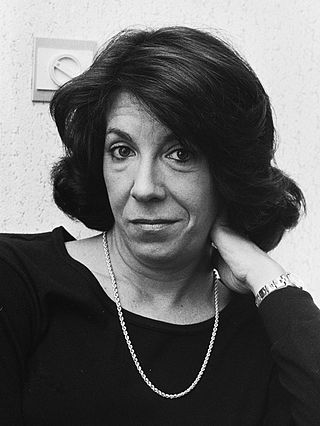Related Research Articles

A madrigal is a form of secular vocal music most typical of the Renaissance and early Baroque (1600–1750) periods, although revisited by some later European composers. The polyphonic madrigal is unaccompanied, and the number of voices varies from two to eight, but the form usually features three to six voices, whilst the metre of the madrigal varies between two or three tercets, followed by one or two couplets. Unlike verse-repeating strophic forms sung to the same music, most madrigals are through-composed, featuring different music for each stanza of lyrics, whereby the composer expresses the emotions contained in each line and in single words of the poem being sung.
The year 1607 in music involved some significant events.
The year 1608 in music involved some significant events and new musical works.

Girolamo Alessandro Frescobaldi was an Italian composer and virtuoso keyboard player. Born in the Duchy of Ferrara, he was one of the most important composers of keyboard music in the late Renaissance and early Baroque periods. A child prodigy, Frescobaldi studied under Luzzasco Luzzaschi in Ferrara, but was influenced by many composers, including Ascanio Mayone, Giovanni Maria Trabaci, and Claudio Merulo. Girolamo Frescobaldi was appointed organist of St. Peter's Basilica, a focal point of power for the Cappella Giulia, from 21 July 1608 until 1628 and again from 1634 until his death.

Carlo Gesualdo da Venosa was an Italian nobleman and composer. Though both the Prince of Venosa and Count of Conza, he is better known for writing madrigals and pieces of sacred music that use a chromatic language not heard again until the late 19th century. He is also known for killing his first wife and her aristocratic lover upon finding them in flagrante delicto.

Luzzasco Luzzaschi was an Italian composer, organist, and teacher of the late Renaissance. He was born and died in Ferrara, and despite evidence of travels to Rome it is assumed that Luzzaschi spent the majority of his life in his native city. He was a skilled representative of the late Italian madrigal style, along with Palestrina, Wert, Monte, Lassus, Marenzio, Gesualdo and others.

Carol Plantamura is an American soprano specializing in 17th and 20th century music.
Sigismondo d'India was an Italian composer of the late Renaissance and early Baroque eras. He was one of the most accomplished contemporaries of Monteverdi, and wrote music in many of the same forms as the more famous composer.
Pomponio Nenna was a Neapolitan Italian composer of the Renaissance. He is mainly remembered for his madrigals, which were influenced by Gesualdo, and for his polychoral sacred motets, posthumously published as Sacrae Hebdomadae Responsoria in 1622.

The concerto delle donne was an ensemble of professional female singers of late Renaissance music in Italy. The term usually refers to the first and most influential group in Ferrara, which existed between 1580 and 1597. Renowned for their technical and artistic virtuosity, the Ferrarese group's core members were the sopranos Laura Peverara, Livia d'Arco and Anna Guarini.
Girolamo Belli was an Italian composer and music teacher of the late Renaissance. He was closely associated with the Ferrara School in the 1580s, having previously studied with Luzzasco Luzzaschi, and was noted for his composition of both madrigals and sacred music.
The year 1604 in music involved some significant events.
La Venexiana is an Italian early music ensemble founded and led by Claudio Cavina, an Italian countertenor and conductor.
Musica Secreta is a British vocal ensemble that was founded in 1991 by soprano Deborah Roberts to explore music written by and for women in the 16th and 17th centuries. In 2000, musicologist Laurie Stras joined the ensemble as a co-director. The group has made several award-winning albums. They collaborated with novelist Sarah Dunant in a musical dramatization of Dunant's novel Sacred Hearts which ran between 2009 and 2012.
Concerto Vocale is a Belgian musical ensemble for baroque music.
References
- ↑ Carol Plantamura When in Emilia Romagna "... was a founding member of Musica Elettronica Viva, Rome; Teatro Musica, Rome; and 2e2m, Champigny (Paris). She founded and performed with the Five Centuries Ensemble specializing in the performance of 17th and 20th century music."
- ↑ International Who's who in Music and Musicians' Directory Page 115 David M. Cummings - 2000 -WILLIAM CHRISTIE Career: Teacher, Dartmouth College, 1970-71; Member, Five Centuries Ensemble, France, 1971-75; Concerto Vocale, 1976-80; Founder-Director, Les Arts Florissants, 1979-; Teacher, Innsbruck Summer Academy for Early Music, 1977-83; ..."
- ↑ Cum notis variorum: the newsletter of the Music Library Issues 109-118 University of California, Berkeley. Music Library - 1987 "Five Centuries Ensemble. Italia ITL 70026; LI 1659. Gagliano, Marco da Musice a una, due e tre voci; Sacrae cantiones. Five Centuries Ensemble. Italia ITL; Claudio Monteverdi", Luzzasco Luzzaschi, Sigismondo d'India, Girolamo Frescobaldi,all on Italia ITL.